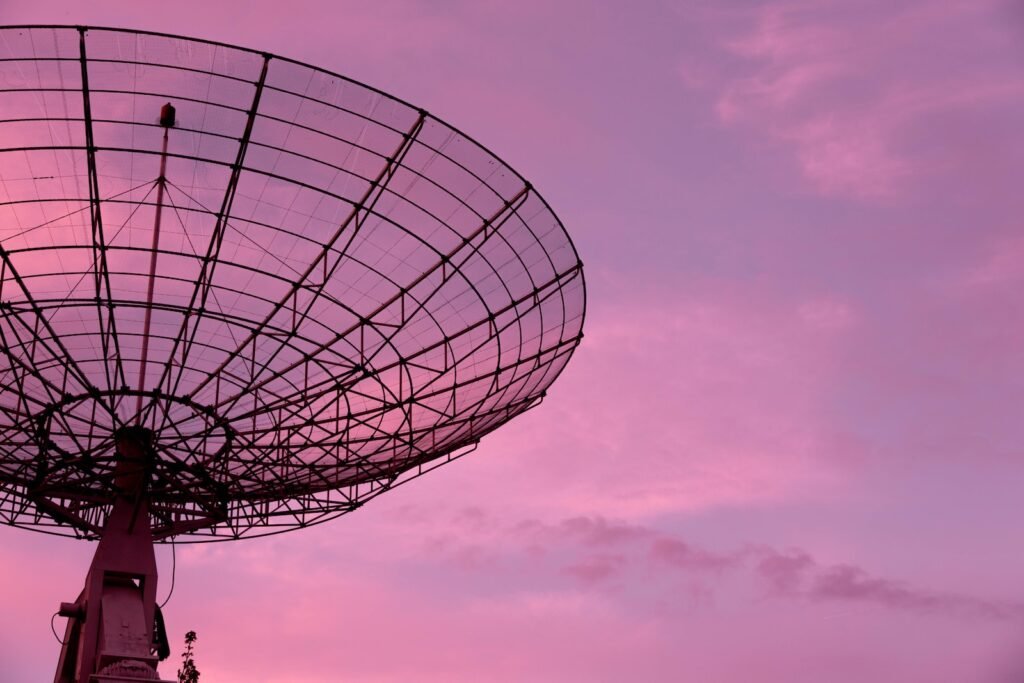The World of Radio Detection
The field of radio detection has revolutionized our understanding of the universe. From mapping cosmic objects to unraveling the mysteries of black holes, radio detection has provided valuable insights into the workings of the cosmos. In this article, we will explore the fascinating world of radio detection and its applications in astronomy and cosmology.
A Brief History of Radio Detection Technology
The history of radio detection technology dates back to the late 19th century when James Clerk Maxwell’s equations paved the way for the understanding of electromagnetic waves. However, it wasn’t until the early 20th century that radio detection technology started to develop. In the 1930s, Karl Jansky discovered radio waves emanating from the Milky Way, marking the birth of radio astronomy. This breakthrough led to the development of radio telescopes and the subsequent advancements in radio detection technology.
Understanding the Basics of Radio Waves
Radio waves are a type of electromagnetic radiation with long wavelengths and low frequencies. They are produced by various celestial objects, such as stars, galaxies, and even pulsars. Unlike visible light, radio waves can penetrate through dust and gas, enabling astronomers to explore regions of the universe that are otherwise invisible. By studying the properties of these radio waves, scientists can gather vital information about the nature and composition of cosmic objects.
How Do Radio Detectors Work?
Radio detectors, also known as radio telescopes, consist of large antennas designed to capture and amplify radio waves. These antennas collect electromagnetic radiation from space and focus it onto a receiver. The receiver then converts the radio waves into electrical signals, which can be analyzed and processed by astronomers. Sophisticated techniques, such as interferometry, allow multiple radio telescopes to work together, creating high-resolution images of celestial objects.
Applications of Radio Detection in Astronomy
Radio detection has proven to be invaluable in various areas of astronomy. It has been instrumental in studying the birth and death of stars, mapping the distribution of galaxies, detecting quasars, and investigating the properties of pulsars. Additionally, radio telescopes are crucial in the search for extraterrestrial intelligence (SETI), as they can detect potential radio signals from intelligent civilizations in the universe.
Radio Detection and Mapping of Cosmic Objects
One of the primary applications of radio detection is the mapping of cosmic objects. By observing the radio emissions from galaxies, astronomers can create detailed maps that reveal the distribution of gas, dust, and magnetic fields. This information helps scientists understand the formation and evolution of galaxies, as well as the processes that drive star formation within them.
The Role of Radio Detection in Cosmology
Radio detection plays a significant role in cosmology, the study of the origin and evolution of the universe. By observing the cosmic microwave background radiation, which is a faint afterglow of the Big Bang, scientists can investigate the early stages of the universe’s formation. Radio telescopes, such as the Planck satellite, have provided crucial data that support the Big Bang theory and shed light on the structure and composition of the universe.
Unveiling the Mysteries of Black Holes with Radio Detection
Black holes, one of the most enigmatic objects in the universe, can be studied using radio detection. Radio telescopes can detect the emissions from supermassive black holes at the centers of galaxies. By analyzing these radio signals, scientists can measure the properties of black holes, such as their mass and spin. This information helps unravel the mysteries surrounding these cosmic behemoths and their influence on the surrounding environment.
Exploring the Universe’s Magnetic Fields through Radio Waves
Radio detection is a powerful tool for studying the universe’s magnetic fields. Magnetic fields play a crucial role in shaping the structure of galaxies and influencing various astrophysical processes. Radio telescopes can detect the polarized emissions from cosmic objects, revealing the orientation and strength of magnetic fields. By studying these magnetic fields, scientists can gain insights into the mechanisms that drive the formation of stars and galaxies.
Radio Detection: Shedding Light on the Early Universe
One of the most exciting aspects of radio detection is its ability to peer into the early universe. The expansion of the universe has stretched the wavelengths of ancient radio waves, transforming them into microwaves. By studying these faint microwaves, astronomers can reconstruct the first moments after the Big Bang. This provides valuable information about the conditions and events that shaped the early universe.
Challenges and Limitations of Radio Detection
While radio detection has revolutionized our understanding of the universe, it also faces challenges and limitations. One of the main challenges is overcoming interference from human-made radio signals, such as cell phones and satellites. Additionally, radio waves are easily absorbed by Earth’s atmosphere, limiting the observations to specific frequency ranges. Advances in technology and the development of radio quiet zones are helping to mitigate these challenges, but they still present obstacles to overcome.
The Future of Radio Detection: Advancements and Possibilities
The future of radio detection holds great promise. Scientists are developing next-generation radio telescopes, such as the Square Kilometre Array (SKA), which will possess unprecedented sensitivity and resolution. These advancements will enable scientists to detect fainter and more distant cosmic objects, further expanding our knowledge of the universe. Additionally, the combination of radio detection with other wavelengths, such as infrared and X-rays, will provide a more comprehensive understanding of the cosmos.
Radio detection has opened new windows to observe and study the universe. From its humble beginnings to the cutting-edge technology of today, radio detection has revolutionized astronomy and cosmology. By unraveling the mysteries of black holes, mapping cosmic objects, and exploring the early universe, radio detection continues to push the boundaries of our knowledge. With advancements on the horizon and new telescopes on the way, the future of radio detection holds endless possibilities for unlocking the secrets of the universe.

